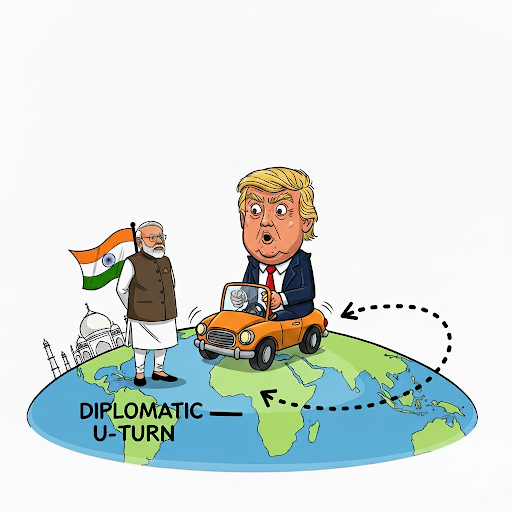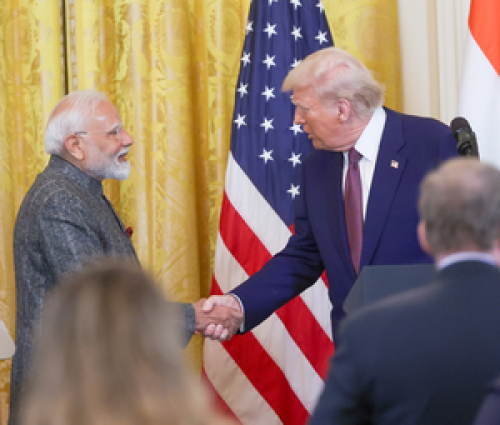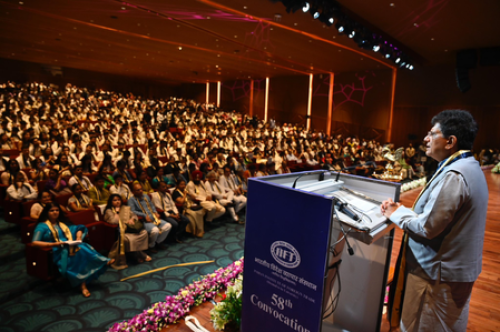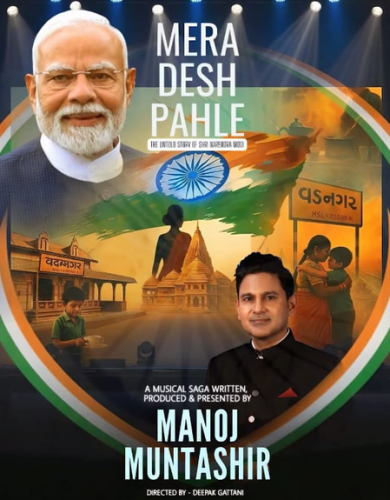By Prashant Shah
An American foreign policy pivot of such magnitude, as dramatic as it is sudden, has captured the world’s attention. After months of increasingly hostile rhetoric and the imposition of punitive tariffs that rattled global markets, the Trump administration has seemingly changed course, extending an unexpected olive branch to India. The timing of this shift is no coincidence. It comes directly after the Shanghai Cooperation Organization summit in Tianjin, where Prime Minister Narendra Modi, Russian President Vladimir Putin, and Chinese President Xi Jinping projected a rare display of camaraderie. The image of the three leaders together—often seen as a tripartite counterweight to Western influence—appears to have forced a tactical recalibration in Washington. What makes this turn so striking is not only its abruptness but also the fundamental question it raises: can India genuinely trust an administration that has repeatedly demonstrated such unpredictability, or is this diplomatic U-turn merely a temporary ploy designed to offset strategic anxiety?
The events leading up to this reversal reveal the volatility that now defines American foreign policy. For weeks, Washington and New Delhi had been locked in a rhetorical and economic standoff. The administration had publicly excoriated India for continuing to buy discounted Russian oil, insisting that these purchases indirectly financed Moscow’s war in Ukraine. Trump added fuel to the fire by accusing India of being a “one-sided disaster” in trade, pointing to what he labeled “the highest tariffs in the world.” This culminated in the imposition of a sweeping 50 percent tariff on Indian goods, a move that not only strained bilateral ties but also threatened broader global supply chains. The crescendo came when Trump posted on social media that the United States had “lost India and Russia to deepest, darkest, China,” a remark that was as petulant as it was strategically shortsighted.
Yet the SCO summit complicated Washington’s narrative. The warm optics between Modi, Putin, and Xi signaled India’s growing geopolitical weight and its insistence on strategic autonomy. The message was clear: India will not be bullied into choosing sides, nor will it subordinate its national interest to the binary frameworks imposed by others. Its foreign policy rests on balance—engagement with all major powers while refusing to be tethered to any single camp. For the Trump administration, this posed an uncomfortable reality. By pushing too hard, it risked driving India closer to Beijing and Moscow, thereby accelerating the very alignment it fears most: a consolidated Eurasian bloc independent of Western influence. The olive branch extended to New Delhi was less an act of magnanimity than a defensive maneuver to prevent such an outcome.
This change in tone, however, does little to mask the unresolved disputes that brought relations to a boil in the first place. While Trump now hails Modi as a “great friend,” his administration continues to grumble over India’s trade practices and energy ties with Russia. In fact, his recent praise for Modi was undercut by a renewed complaint about oil imports from Moscow, revealing that the old grievances have merely been shelved, not settled. America’s strategic interest in India—as a bulwark against China in the Indo-Pacific—remains a long-standing bipartisan consensus. Trump’s tariff-heavy, erratic style has done little to strengthen that imperative. If anything, critics within his own country warn that his policies risk undermining decades of careful bipartisan cultivation of India as a partner. The legal troubles surrounding his tariff regime, with a federal appeals court recently declaring many of them illegal, only add pressure on his administration to recalibrate before alienating New Delhi further.
For India, this oscillation underscores a fundamental truth about its partnership with the United States: trust cannot be built on volatile personalities, but only on stable institutions. The Trump administration has proven that it is willing to swing from antagonism to affection at the first sign of changing tactical winds. India, however, cannot afford to conduct its foreign policy on the basis of such whims. Its strategic autonomy is both a shield and a compass. Energy security requires maintaining relations with Russia, just as economic security requires diversified trade partnerships, including with the U.S. Defense cooperation with Washington is important, but so is engagement with multilateral forums like the SCO and BRICS. India has mastered the art of walking this diplomatic tightrope, and recent events only reinforce the necessity of such balance.
The lesson for New Delhi is neither new nor surprising. America’s sudden reversal is not a gesture of friendship but a calculation born of geopolitical necessity. It reflects Washington’s fear of losing ground in the Indo-Pacific, not a newfound respect for India’s autonomy. As such, New Delhi must welcome the de-escalation but remain skeptical of its durability. Personal rapport between leaders can lubricate diplomacy, but it cannot substitute for the deeper alignment of long-term interests. Trump’s language may have shifted overnight, yet the structural tensions in trade, tariffs, and energy will resurface again, as they always do. This is why India’s strategy of hedging—engaging with all major powers while refusing entanglement in zero-sum rivalries—remains its best course.
The broader significance of this episode lies in what it reveals about the shifting architecture of global politics. The sight of Modi, Putin, and Xi together rattled Washington precisely because it symbolized a multipolar order where the United States no longer holds uncontested sway. India’s growing influence stems not only from its economic rise but also from its ability to act as a swing state, shaping the balance between competing power blocs. Washington knows that alienating New Delhi could have consequences far beyond bilateral trade. For India, this is leverage, but it is also responsibility. To preserve its autonomy, it must resist the temptation to lean too heavily toward either camp, instead carving a path that reflects its own long-term interests.
In the end, America’s sudden change of heart is less about friendship and more about fear—fear of losing influence, fear of isolation, fear of a new order in which its leverage is diminished. India would be wise to accept the olive branch while keeping its eyes open to these underlying motivations. Words of flattery may be politically convenient, but they are rarely enduring. The real measure of partnership lies in consistent action, not impulsive declarations. For now, New Delhi can welcome Washington’s overture, but it will continue to chart its own course, one that neither bends to pressure nor succumbs to the unpredictability of others. That, ultimately, is the essence of India’s strategic autonomy and the surest guarantee of its place in an increasingly complex world.
The latest chapter in the U.S.-India relationship serves as a vivid reminder that in the world of great-power politics, words are often just a temporary veneer over enduring strategic realities.
Trump’s sudden shift is not about friendship—it is about ego, optics, and strategy. India knows this well, and it will continue to chart its course with eyes wide open.













